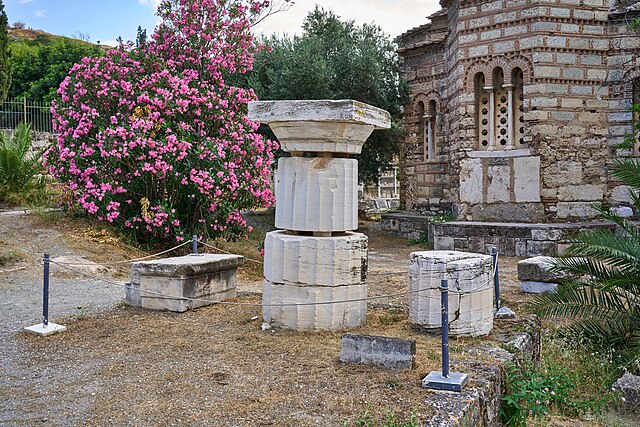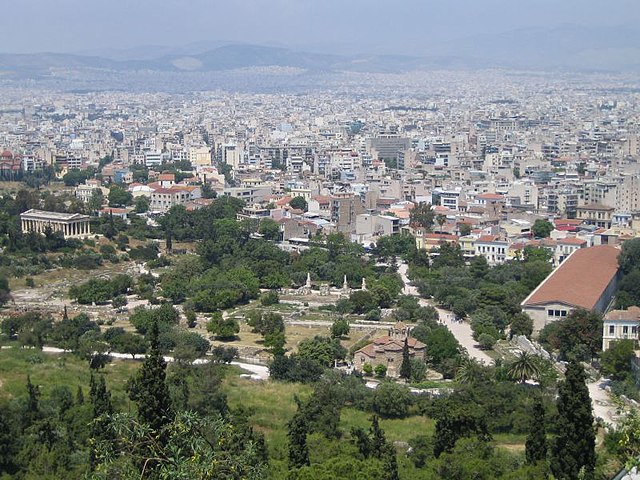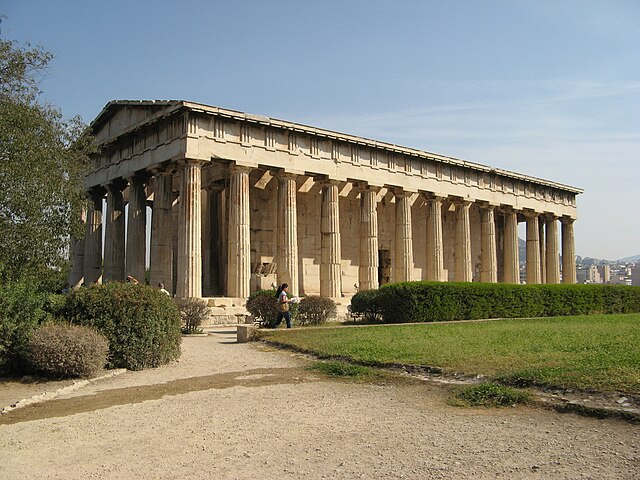The Southwest Temple is the modern name for a tetrastyle prostyle Doric temple located in the southwest part of the Ancient Agora of Athens. Fragments from the temple found throughout the Agora enable a full, if tentative, reconstruction of the temple's appearance. These fragments originally belonged to several Hellenistic structures and a fifth-century BC stoa at Thorikos in southeastern Attica, but they were spoliated to build the temple in the Agora in the age of Augustus. It is unknown which god or hero the temple was dedicated to. It was spoliated to build the post-Herulian fortification wall after the Herulian sack of Athens in 267 AD.
Column drum from the Southwest Temple, originally from the Classical "stoa" at Thorikos, in tertiary use in the post-Herulian Wall. Mason's marks to guide reassembly are visible at upper left and lower right.
Column capital, drums, and (at left) anta capital from Southwest Temple.
The ancient Agora of Athens is the best-known example of an ancient Greek agora, located to the northwest of the Acropolis and bounded on the south by the hill of the Areopagus and on the west by the hill known as the Agoraios Kolonos, also called Market Hill. The Agora's initial use was for a commercial, assembly, or residential gathering place.
Ancient Agora of Athens
View of the ancient agora. The temple of Hephaestus is to the left and the Stoa of Attalos to the right.
The entrance to the Odeon of Agrippa
The Temple of Hephaestus





